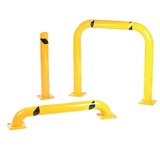According to Safe Work Australia, the level of workplace bullying in 2015 was 6.8%, with around 50% of all stress related work claims made due to work pressure and harassment.
What has this got to do with company culture? Everything.
Culture isn't just organising an event to get the troops out on a team-building crusade.
It is so much more.
Despite the fact that people don't like to talk about feelings and emotions, every individual experiences them each and every day. Company culture influences these feelings and emotions, along with the mental and physical health and safety of employees.
What is Company Culture?
The Business Dictionary defines culture as: "The values and behaviours that contribute to the unique social and psychological environment of an organisation."
Every company has a culture, whether it is planned or not.
It's the 'feeling' and 'mindset' of, and within your company, a powerful element that shapes relationships, work satisfaction, engagement, commitment, and entire work processes.
Why is Company Culture so Important for Engagement and Safety
Culture is more than a thought, it is something that an organisation lives and breathes. For example, if a business values safety as a high productivity measure, then establishing a "safety culture" becomes high on the agenda.
When you build a safety culture, it builds a sense of responsibility into the company that everyone shares, "encouraging everyone to learn about, document, examine and pro-actively try to resolve risk," says Kate Gibbs on Resilium.
In 2015, Safe Work Australia engaged in developing reports for the manufacturing, construction and transport industries, just 3 of the industries considered national priorities in relation to "work health and safety perceptions, hazard exposures and work health and safety activities."
Right now, these are a high priority because there is too much of a laid back attitude across the high-risk industry sector, which raises concern over 'breaking rules' to meet deadlines, 'cutting corners' to slash costs, managers having 'unrealistic expectations' that send pressures and stress levels soaring, not to mention, a report by Drug and Alcohol Research Connections, showing the highest alcohol and drug use in these sectors.
Stats in the Manufacturing Industry
According to the manufacturing industry report, here are a few stats:
- 2 in 5 workers (45%) are exposed to high job demands
- Only 16% report sufficient anti-stress and anti-bullying policies in place
- 88% report high stress from keeping track of more than one thing
- Two thirds of workers feel under pressure to 'work fast' or 'all the time'
- 19% reported they were unable to take adequate breaks
While these are no doubt factors that in many cases can't be completely avoided. They are made worse if there is a negative company culture. Rather than waiting for issues to occur, it's far better to foster a proactive attitude and work toward building a positive company culture.
Benefits of Great Company Culture
The benefits of building a positive culture include:
- Lower incident rates and costs
- Increased productivity and performance
- Less days off work for employees
- Higher engagement, commitment and satisfaction
How To Reinvent Company Culture
Zappos is considered number one out of ten for company culture, among Google, Facebook, Adobe, Twitter and others. And when faced with having to reinvent culture, many companies begin with developing core values that "guide us in everything we do," says Tony Hsieh of Zappos, for the Harvard Business Review.
That is a very important point: Core values are NOT just descriptions.
"We developed a list of committable core values…not just values that end up being part of a meaningless plaque on the wall," says Tony Hsieh, for the Harvard Business Review.
Essentially your core values are a formalized definition of your culture. And from there you can work on a strategic plan for implementation.
Changing culture is a tough task. The toughest components, according to the Wall Street Journal, being:
- Understanding - people in the leadership team and within the workplace knowing why it's needed.
- Resources - will it require a shift from elsewhere or planning on how resources will be allocated?
- Motivation – both employers and employees have to want to change!

Featured Image Credit: Strategic Culture Change via Alix Partners
Tips for Reinventing Culture
- From the beginning, work on strategic culture change through leadership, structure, systems, practices, and teams.
- The leadership team must take ownership and create a shared direction to drive the company forward.
- Don’t just lecture people - communicate the vision and enable the experience.
- Convert the easy followers or the ones that need it most - then convert the tougher ones over time.
- Redistribute resources toward areas that will make a large difference first.
- Have an advisory group for problem solving.
- Keep pushing the vision, values and goals over the long-term.
Reinventing company culture may be tough. But if you asked any company if the effort was worth it, they would no doubt answer yes!















